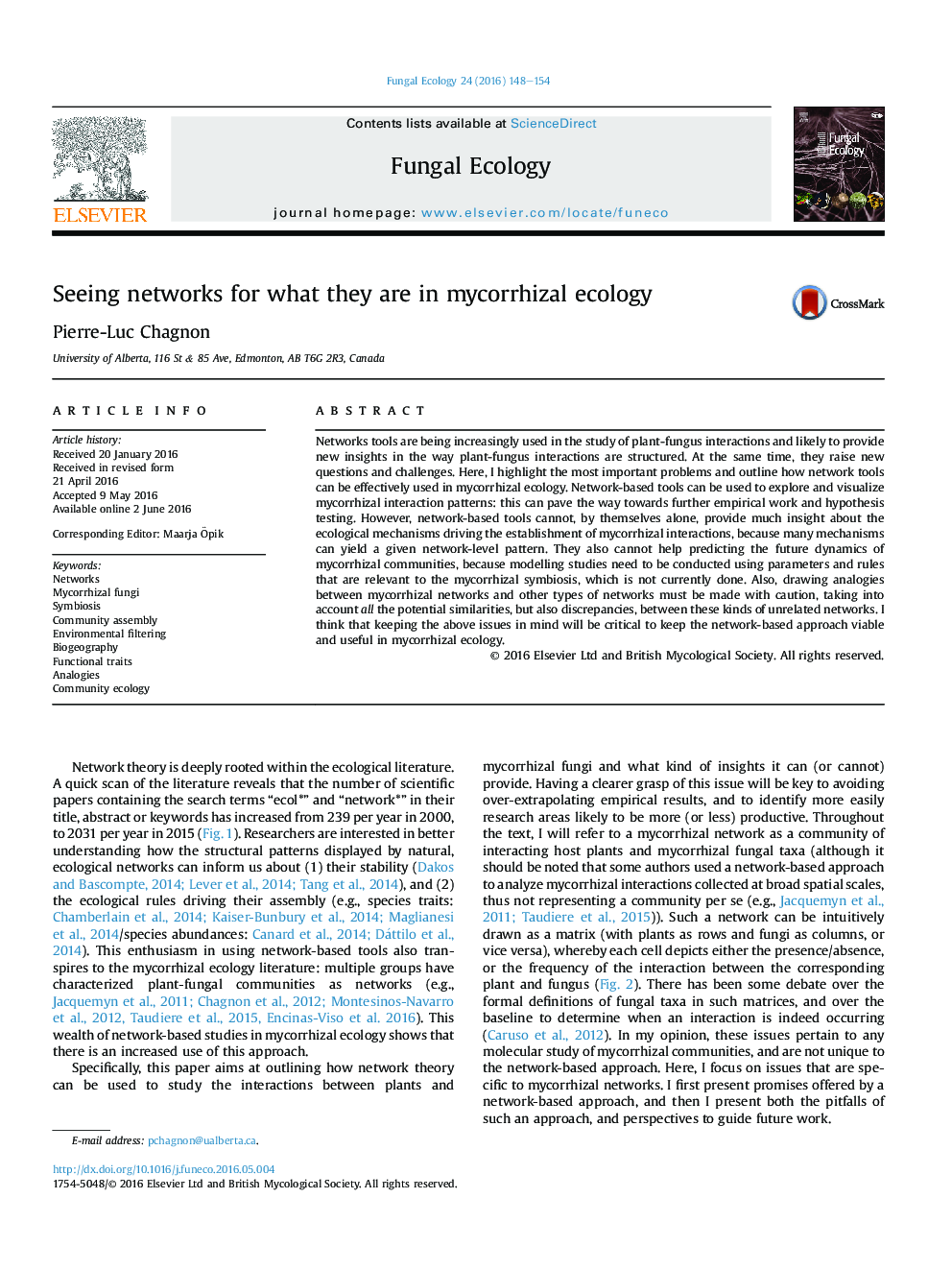| Article ID | Journal | Published Year | Pages | File Type |
|---|---|---|---|---|
| 5517664 | Fungal Ecology | 2016 | 7 Pages |
Networks tools are being increasingly used in the study of plant-fungus interactions and likely to provide new insights in the way plant-fungus interactions are structured. At the same time, they raise new questions and challenges. Here, I highlight the most important problems and outline how network tools can be effectively used in mycorrhizal ecology. Network-based tools can be used to explore and visualize mycorrhizal interaction patterns: this can pave the way towards further empirical work and hypothesis testing. However, network-based tools cannot, by themselves alone, provide much insight about the ecological mechanisms driving the establishment of mycorrhizal interactions, because many mechanisms can yield a given network-level pattern. They also cannot help predicting the future dynamics of mycorrhizal communities, because modelling studies need to be conducted using parameters and rules that are relevant to the mycorrhizal symbiosis, which is not currently done. Also, drawing analogies between mycorrhizal networks and other types of networks must be made with caution, taking into account all the potential similarities, but also discrepancies, between these kinds of unrelated networks. I think that keeping the above issues in mind will be critical to keep the network-based approach viable and useful in mycorrhizal ecology.
